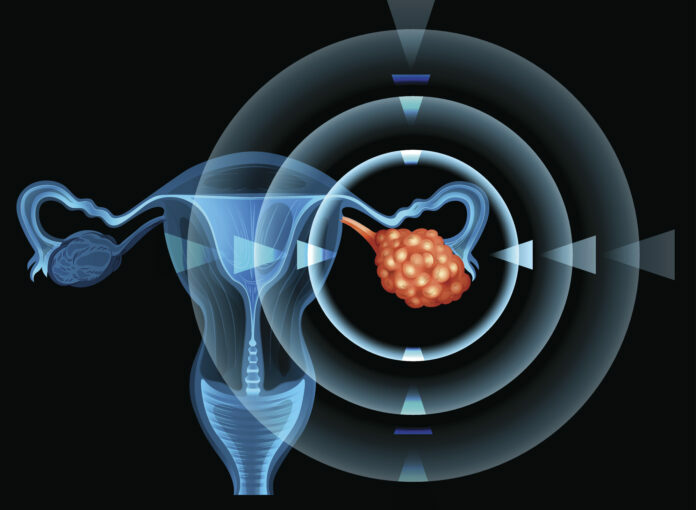A new liquid biopsy test developed by researchers at USC Norris Comprehensive Cancer Center has shown promise to distinguish which pelvic masses are benign and which are tumorous, a development that could aid early diagnosis of high-grade serous ovarian carcinoma (HGSOC), the most common and lethal form of the disease. Details of the preclinical research are published in the journal Clinical Cancer Research and show promise to provide clinical guidance for surgeons.
“The test has the potential to improve treatment, because the surgical approach to removing a pelvic mass differs depending on whether it’s benign or not,” says Bodour Salhia, PhD, co-leader of the Epigenetics Research in Cancer Program at USC Norris Comprehensive Cancer Center and the study’s corresponding author. “Right now, doctors essentially have to take their best guess.”
The team also have hopes that further investigation of the new test, called OvaPrint, can be used to screen for ovarian cancer in the general population for the early detection of ovarian cancer. Early detection of the first stages of ovarian cancer result in women shows a five-year survival rate of more than 90%, while detection in later stages has only a 40% five-year survival rate.
The new test collects cell-free DNA (cfDNA) from a patients blood sample and then analyzes to see if it has been methylated at certain nucleic acids that are known to be biomarkers of ovarian cancer. The research team at USC conducted next-generation sequencing of normal tissue and tissue from HGSOC tumors to map methylation patterns in these tissue. Comparing the results from the normal tissue with tumor tissue, the researchers uncovered specific DNA methylation patterns at certain nucleic acids that were associated with HGSOC.
Using this information, the team developed a liquid biopsy test that could identify circulating DNA in a blood sample that had been methylated in these specific regions. The assays was then tested using blood samples from HGSOC patients and those with benign ovarian masses and developed a machine learning model that developed a method to classify the masses as either benign or cancerous.
The resulting test, OvaPrint, exhibited a 91% accuracy rate with “a positive predictive value (PPV) of 0.95, and a negative predictive value (NPV) of 0.88, surpassing other commercial tests, and has potential future value for risk assessment in women with adnexal masses in both symptomatic and asymptomatic women,” the researchers write.
The researchers noted some limitations in the study, including low sample sizes of cancerous tumors and healthy samples, as well as whether a high OvaPrint score for low-grade serous ovarian carcinoma (LGSOC) had clinical significance. In both cases, the team plans to conduct further research to answer these questions.
In conclusion, the authors noted “The current data are especially compelling for several reasons, highlighted by the feature discovery in tissue that was validated in an independent cohort of nearly 200 plasma samples which demonstrated excellent NPV and PPV. The development of OvaPrint, which is an accurate, noninvasive preoperative test for ovarian cancer has the potential to improve diagnosis and cancer care for the almost 20,000 women diagnosed yearly.”
This article was published by: Inside Precision Medicine


